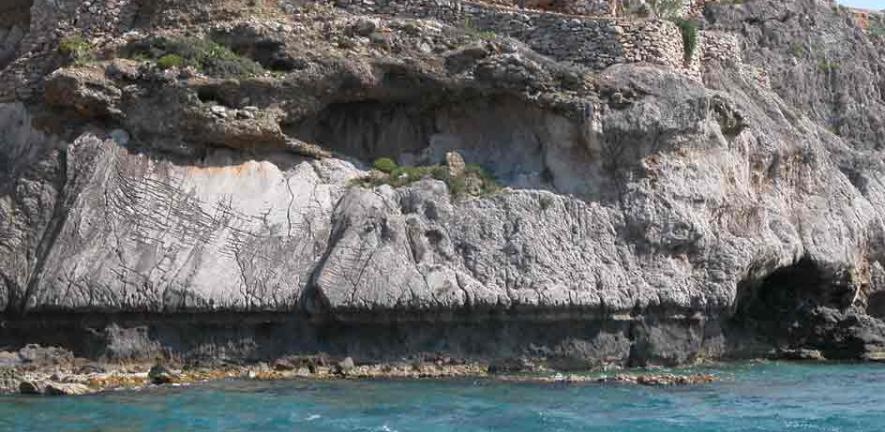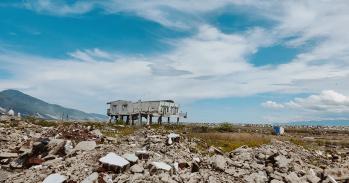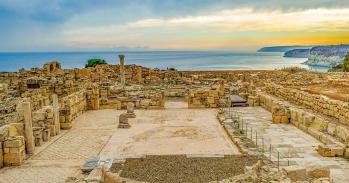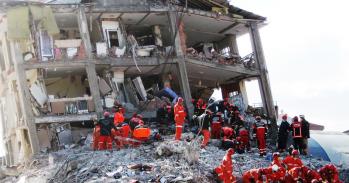
Research reveals the cause of an ancient catastrophe that could threaten the Mediterranean again.
Research reveals the cause of an ancient catastrophe that could threaten the Mediterranean again.
If the entire plate boundary between western Greece and Turkey behaves in the same way, we might expect a similar earthquake and tsunami about every 800 years, and the last was in AD 1303.
James Jackson
On 21 July AD 365, an earthquake generated a tsunami that devastated the Nile delta, eastern Sicily and parts of the Adriatic as far north as modern Dubrovnik. In a recent article in Nature Geoscience, PhD student Beth Shaw from the Bullard Labs, Department of Earth Sciences, who led a team that included colleagues from the Universities of Oxford and Nice and Imperial College London, tracked down the fault that caused the earthquake.
‘By carbon-dating corals we showed that in AD 365 a fault within the plate boundary along the southern edge of Crete uplifted the western part of the island by up to 10 m, leaving marks that resembled a bath-ring around the coastline,’ said Beth Shaw. The fault that uplifted Crete also uplifted the sea floor, and it is this that generates a tsunami.
Calculations show that the tsunami would have had the characteristics described by contemporary writers in the 4th century. The tsunami’s height in the open ocean would have been about 60 cm, comparable to the tsunami from the 2004 Sumatra earthquake. The great destruction from these waves comes from their amplification when they hit shallow waters at the coast.
The researchers also demonstrated how rapidly the fault near Crete is accumulating strain energy today. ‘If the entire plate boundary between western Greece and Turkey behaves in the same way, we might expect a similar earthquake and tsunami about every 800 years, and the last was in AD 1303,’ said Professor James Jackson, Head of the Bullard Labs. ‘A repeat of the tsunami in the much more populated eastern Mediterranean of today would be a catastrophe. This work highlights the need to educate coastal populations in the Mediterranean so that they know what to expect and how to react when a big earthquake occurs.’
This work was supported by the UK’s Natural Environment Research Council (NERC) and was published in Nature Geoscience (2008) 1, 268–276. For more information, please contact Beth Shaw (bs370@cam.ac.uk).
This work is licensed under a Creative Commons Licence. If you use this content on your site please link back to this page.





